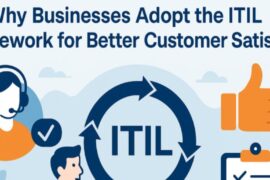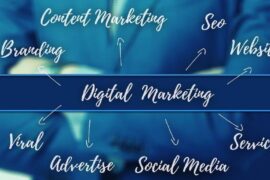In today’s competitive digital landscape, web design firms are increasingly turning to white-label digital marketing to enhance their service capabilities and provide comprehensive solutions to clients. This article explores how integrating white-label digital marketing can significantly benefit web design services, offering insights into its definition, benefits, challenges, and future trends.
Understanding white-label digital marketing
White-label digital marketing involves outsourcing digital marketing services under a firm’s brand. It allows web design firms to expand their service offerings beyond website design and development to include SEO, PPC advertising, content marketing, social media management, and more. These services are branded as the firm’s own, enhancing their portfolio and client offerings.
How It Works in the Context of Web Design
By partnering with specialized digital marketing agencies, web design firms can leverage expertise in various digital marketing disciplines. This collaboration allows firms to provide holistic solutions that integrate effective web design with targeted digital marketing strategies. Clients benefit from a streamlined approach to enhancing their online presence and achieving their business goals.
Benefits of Integrating White Label Digital Marketing
Enhanced Service Offerings
Integrating white-label digital marketing enables web design firms to offer comprehensive digital solutions under one roof. Clients can access a full spectrum of services, from initial website creation to ongoing digital marketing campaigns and optimization strategies. This integrated approach enhances client satisfaction by addressing all aspects of their online presence.
Scalability and Flexibility Advantages
Outsourcing digital marketing services provides web design firms with scalability advantages. They can easily scale operations and adapt service offerings based on client needs and market demands without the overhead costs and logistical challenges of expanding an in-house team.
Cost-effectiveness and resource optimization
White-label partnerships offer cost-effective solutions by eliminating the need for extensive in-house digital marketing expertise and infrastructure. Firms can allocate resources more efficiently, focusing on core competencies like creative design and client relationship management while relying on experts for digital marketing execution.
Case Studies of Successful Integration
Many web design firms have successfully integrated white-label digital marketing into their service models. For instance, Company X expanded its service offerings to include SEO and content marketing through a strategic partnership with a digital marketing agency. This integration resulted in improved client retention rates and increased revenue streams from additional service offerings.
Impact on Client Satisfaction and Retention
Clients benefit from the convenience of accessing comprehensive digital solutions from a single provider. Integrated digital marketing enhances visibility, drives traffic, and improves conversion rates, ultimately contributing to higher client satisfaction and long-term partnerships.
Key Strategies for Implementing White Label Digital Marketing
Choosing the right partner
Selecting a reputable digital marketing agency is critical to successful integration. Web design firms should assess partner expertise, industry experience, and alignment with their brand values to ensure a seamless collaboration that enhances service delivery and client outcomes.
Integration into Existing Services
Smooth integration requires clear communication and goal alignment between the web design firm and the digital marketing provider. Establishing shared objectives, defining workflows, and implementing transparent reporting mechanisms facilitate collaboration and ensure consistent service quality.
Maintaining brand consistency
Despite outsourcing, maintaining brand identity and quality standards is essential. Web design firms should establish clear guidelines for content creation, campaign management, and client communication to uphold brand integrity and meet client expectations effectively.
Challenges and Solutions
Common Hurdles in White-Label Digital Marketing
Challenges such as communication gaps, differing work cultures, and quality control issues can arise in white-label partnerships. Proactive communication, regular performance reviews, and continuous improvement initiatives help mitigate these challenges and foster a collaborative working relationship.
Strategies to Overcome Them
Establishing open lines of communication, setting mutual expectations, and implementing robust project management practices are crucial to overcoming common hurdles. Regular feedback loops, performance evaluations, and adapting strategies based on client feedback ensure ongoing success and client satisfaction.
Measuring Success: Metrics and KPIs
Tracking performance and ROI
Measuring the success of white-label digital marketing initiatives requires tracking key performance indicators (KPIs) such as website traffic, lead generation, conversion rates, and return on investment (ROI). These metrics provide valuable insights into campaign effectiveness, client engagement, and overall business impact.
Examples of Relevant Metrics
For example, a 30% increase in organic search traffic or a 20% rise in lead conversions can indicate the effectiveness of integrated digital marketing efforts. Regular performance reporting, analytics interpretation, and data-driven decision-making optimize strategies and maximize client ROI.
Future Trends in White Label Digital Marketing
Emerging Technologies
Advancements in artificial intelligence (AI), machine learning, and automation are shaping the future of digital marketing. These technologies enhance targeting precision, personalize customer experiences, and optimize campaign performance, driving higher ROI and competitive advantage for web design firms and their clients.
Industry Forecasts and Predictions
The digital marketing landscape is continuously evolving with new platforms, algorithms, and consumer behaviors. Web design firms that stay ahead of industry trends and embrace innovative technologies can capitalize on early adopter advantages and offer cutting-edge solutions that meet evolving client needs.
Conclusion
In conclusion, integrating a white-label digital marketing agency empowers web design firms to expand their service capabilities, enhance client satisfaction, and achieve sustainable growth in a competitive marketplace. By outsourcing specialized digital marketing services to a trusted agency, firms can focus on core strengths, deliver comprehensive solutions, and drive tangible results that exceed client expectations.
FAQs
How does white-label digital marketing benefit web design services?
White-label digital marketing allows web design firms to expand their service offerings without internal expertise. By partnering with specialized agencies, they can offer SEO, PPC, content marketing, and social media management. This expands client solutions while focusing on core web design strengths.
What are the key challenges of integrating white-label digital marketing?
Challenges include communication gaps with digital agencies and maintaining brand consistency. Alignment between client expectations and brand identity is crucial for successful integration.
How can web design firms measure the success of white-label digital marketing?
Metrics like website traffic, lead generation, and ROI on digital spend are key. Tracking client satisfaction and retention rates also gauges effectiveness.
What are the future trends in white-label digital marketing?
Future trends include AI and automation for data analytics, personalization, and efficiency. UX design, voice search optimization, and omnichannel strategies will also influence future directions.































